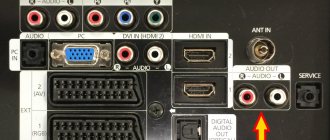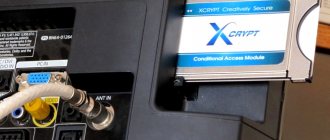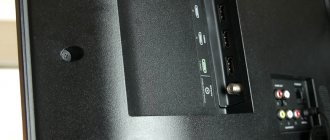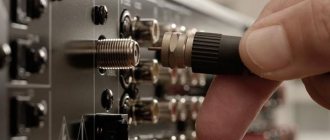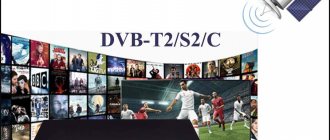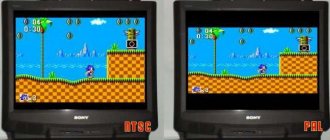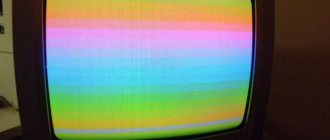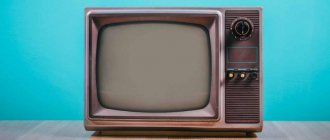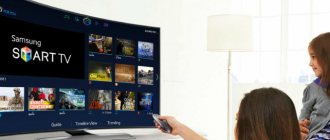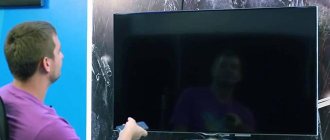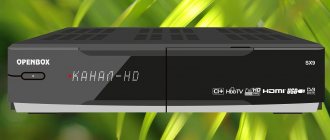TV is one of the main objects in every apartment. When purchasing it, you can find obscure letters on the case, like DVB-T2 and others. Many people have different thoughts on this matter. It just so happens that people in the CIS learn about such new products after some time. This is due to the fact that they are developed and tested in the West. Today you can find out what DVB-C, DVB-T2, DVB-T, DVB-S2 are.
What are the little-known letters DVB?
“DVB” is the first letter of a consortium of European countries that have invented digital TV standards in a row. In English, these three letters have the following meaning: project: digital video broadcasting. The main difference between regular TV and digital TV is the clarity and stable image picture. Older generations of TV viewers remember analog antennas and channels with ripples that were almost impossible to get rid of.
Everything changed with the advent of a new type of video delivery to TV screens. The DVB project is developing in all directions and types of image delivery: terrestrial, cable, airborne and others. Today, such data is transported using signal encoding. A newly designed type of data transmission allows us to encode not only the image signal to our televisions, but also additional data. Such as, for example, a TV program guide.
Due to the fact that there are essentially several different methods of transmitting information (via cable, satellite, etc.), additional technology abbreviations have appeared (DVB-T, DVB-C, etc.). Which will be discussed further. If your new TV supports one or more of these standards, this is definitely a plus for you. Since other TV viewers need to purchase a separate set-top box to connect the corresponding television. Therefore, the price of a TV if it has DVB abbreviations on its body will be higher than others.
How can I find out if my TV supports dvb c?
This can be done in several ways, because it is not always possible to immediately determine this important point. Therefore, you can do the following:
- Start by studying the instructions with the device's operating manual. It will contain a list of all digital standards that the TV model can support.
- You can also contact the manufacturer's service center. They will be able to answer, because specialists know all the current information about each model and what broadcast formats are available to it.
- Alternatively, you can take the cable and plug it into the antenna socket. In the case when there are few channels, this means the DVB-C standard is not available.
What is DVB-C?
The method of transmitting digital streams from DVB-C requires the presence of a cable. This is a wired TV that is supplied by the provider. Almost all new devices are capable of working with this technology. If yours is not marked DVB-C, you can purchase the appropriate tuner and order the connection of certain software packages from your provider. Such services are the most common and, as a rule, are not expensive compared to other types of connection.
This system uses MPEG-2 codecs when transmitting video and audio. DVB-C can also often be found in large television network organizations. They are also used in conjunction with satellite antennas. You can also watch broadcasts with DVB-C technology via a PC or laptop. But for this you need separate equipment - a TV tuner. It connects to the motherboard in the system unit.
A device that can decode the signal from DVB-C switching stations processes the data quite well. Usually the quality of the broadcast image does not cause any complaints. Often providers offer to buy receivers from them at a discount if your device cannot receive a signal in this format. The TV set-top box is connected to the TV with a cable of three connectors. After that, you can buy special cards to watch TV shows for the entire period (payment period).
DVB-C is in many ways different from DVB-T2, DVB-S2, DVB-T. First of all, the architecture of the signal receiving device. Such set-top boxes can show up to 150 programs. Setting up other channels that are not in the package yourself is not possible. The quality of the picture on the screen will not depend on the distance of your TV or set-top box from the source itself.
What is the difference between DVB-C and DVB-T and DVB-S
DVB-C:
- Broadcast cable as a broadcast form.
- The compression used is MPEG-2 or MPEG-4.
- 16 QAM or 256 QAM data modulation.
- RS encoder as FEC.
- The circuit contains an alternating module.
- Subscribers receive a signal from the provider, a cable is used.
- The DVB-C format uses frequencies from 55.25 to 403.25 MHz.
DVB-T:
- Terrestrial short form of broadcasting.
- The modulation scheme is OFDM coded.
- The content is transmitted uncompressed in MPEG.
- QPSK, 16 QAM, 64 QAM – data modulation schemes.
- An external RS (204,188) encoder is used, as well as an internal convolutional one.
- The interleaver is suitable for both internal and external.
- Frequency VHF and UHF channels with 6 MHz, 7 MHz, 8 MHz (bandwidth).
DVB-S:
- Broadcasting via satellite.
- MPEG-2 compression is used.
- C-band and Ku-band frequencies can be used.
- FEC methods - DBS receiver error correction.
- Transmission occurs via LHCP and RHCP.
- The DVB-S standard requires an antenna that is smaller in size.
What do the letters DVB-T on the TV case mean?
DVB-T is another technology that has similarities with the analog signal transport method. Television towers are taken as the source. But, as is the case with other digital standards, a special decoder is needed to display channels on the screen with this type of data transmission. Essentially, DVB-T is the same as analog television from the viewer’s point of view. But in technical terms, the structure and type of signal from the source to your TV have changed.
DVB-T today is more noise-resistant than analog TV. For example, many can remember how other turned on electrical appliances in the house could cause interference on the TV. You won't see this phenomenon in digital TV. Although here there are some factors that can worsen the signal quality - low voltage in the network. Or a poor quality receiver.
The location of the TV tower is important for signal reception. The closer you are to the source, the more consistently good quality TV shows will be displayed. Various buildings along the path to the signal can also affect the picture displayed. Mobile phone developers even tried to use DVB-T technology. It was built into the ASUS ZenFon Go TV smartphone, LG-HB620T and a number of other devices. But users, apparently, did not appreciate it.
At the moment, DVB-T in relation to DVB-C, DVB-T2, DVB-S2 can be considered the last century. But this does not mean that it is not used. This type of TV is spreading in the Russian Federation, despite its age, slowly. This depends on the short range of the signal. And also with other difficulties.
Net
Galaxy A02 and A02s support 4G cellular network, Wi-Fi in the 2.4 GHz band and GPS. The A02 model has a slightly newer Bluetooth version - 5.0 versus 4.2 for the Galaxy A02s. But none of the smartphones received an NFC module. Children or older people can easily survive without NFC on their phone, but more active users definitely need this useful, multifunctional module.
| Samsung Galaxy A02 | Samsung Galaxy A02s | |
| cellular | 4G LTE, 3G WCDMA/UMTS, 2G GSM | 4G LTE, 3G WCDMA, 2G GSM |
| WiFi | 802.11 b/g/n, 2.4 GHz | 802.11 b/g/n, 2.4 GHz |
| Bluetooth | 5.0 | 4.2 |
| Navigation | Glonass, GPS | Glonass, GPS, BeiDou, Galileo |
| NFC | No | No |
DVB-T2 – the next generation of TV
Consider the following type, codenamed DVB-T2. This is terrestrial TV. It will make it possible to spread the popularity of DVB-T by almost half. At the same time, the creators will not have to change almost anything in the old type structure. Most of the infrastructure is useful for the functioning of DVB-T2. Despite the fact that these two types are related, the receivers are practically incompatible. This means that if you connect a receiver with DVB-T, you will not find programs in DVB-T2. And vice versa.
DVB-T2 is also characterized by the fact that on your TV screens you can display images not only in HD quality, but also in 3D. This is a more advanced method of digital-TV transmission, in which a number of additional technologies were used. It is already clear to many people who have an understanding of digital TV that this particular standard will become the main one when analog has completely exhausted itself. The object for receiving radio waves and transmitting them to a TV or set-top box is a regular antenna. The signal, as in the example with DVB-T, is still distributed through television towers.
The full transmission of the signal is carried out according to the already familiar scenario: you connect the set-top box to the TV, the antenna to the set-top box and pay for the corresponding services from the supplier. The decoder can be connected to DVB-T2 using a well-known cable with three connectors. Such networks operate even with a poor signal when you are far from the broadcast source. Due to this, every resident of even remote villages can enjoy their favorite television series.
Most TV tuners have a built-in program for controlling and automatically searching and tuning channels. You can also find a list of radio channels there. Due to this, you can use your TV as a radio receiver with convenient control. The tuners have additional connectors for USB flash drives. So, you can burn music or movies to a flash disk and play them on your blue screen.
Performance
As I already mentioned, the performance of the Galaxy A02s and A02 is their weak point. To such an extent that A02 even has difficulty loading into the system. Probably, its 4-core chip with a frequency of 1.5 GHz is physically not enough power to process all the services and processes of Android 10. The old Galaxy A01 even functions many times faster thanks to the 8-core “dragon”. And here is the 4-core Tek. This dip in performance defies reasonable explanation. Model A02, in principle, is not intended for resource-intensive tasks. Natural grandma's phone. Its limit is calls, the Internet, video and the lightest games. This is not a criticism, but simply a fact, without claims. Memory in A02 is installed at a minimum, only 2/32 GB. Let me remind you that to run Android 11 you need at least 3 GB of RAM. And Galaxy A02s, fortunately, has such technical potential. This smartphone is equipped with a very current 8-core Snapdragon 450 chipset, which guarantees an almost 2-fold performance advantage over the Galaxy A02. If you are looking for the cheapest phone that allows you to play 3D video games (even at minimum settings), provides more or less smooth multitasking and can be upgraded to Android 11 in the future, I advise you to pay a little extra for the Galaxy A02s. He won't disappoint.
| Samsung Galaxy A02 | Samsung Galaxy A02s | |
| Chipset | Tek MT6739W, 28 nm | Qualcomm Snapdragon 450, 14 nm |
| CPU | 4 Cortex-A53 cores @1.5 GHz | 8 cores Cortex-A53 @1.8 GHz |
| GPU | PowerVR GE8100 | Adreno 506 |
| RAM | 2 GB | 3 GB |
| Persistent memory | 32 GB, eMMC 5.1 | 32 GB, eMMC 5.1 |
| Memory card support | up to 1 TB, microSD, triple tray | up to 1 TB, microSD, triple tray |
| AnTuTu | about 57,000 | about 93,000 |
What is DVB-S2?
The initial type of TV DVB-S, relative to DVB-C, DVB-T, DVB-T2, is a type of information transmission with a familiar dish. For this scheme to work, any blue screen, TV receiver, as well as a dish (satellite) that picks up the reception will do. If you notice a sticker on the monitor marked DVB-S (or DVB-S2), then it does not need an additional set-top box at all. You can directly connect a dish to it and start automatic channel tuning. It is no coincidence that this technology is found in many popular TV models.
But there is one nuance - foreign TV manufacturers integrate DVB-S technology into their devices in a “pure” form. And the tuners that we often purchase from suppliers are . This allows us to access some paid channels as well. But with built-in technology, you may have problems. They can be resolved by calling a technician to your home. If you can decode the channels yourself, then you can save money.
DVB-S2 is the next standard in the development branch. The previous version has been significantly improved. New features have been introduced both in technical details and in terms of user interface. Added news gathering, which was also implemented on mobile devices. The new digital TV format opens up the possibility of viewing in HD quality. During its development, various types of channel coding and modulation were introduced. DVB-S2 is excellent in many respects for broadcasting programs. It is used:
- Resources for data dissemination;
- In standard signal transmission methods, as well as distribution in high definition (HDTV);
- In professional programs.
Unlike the previous generation, DVB-S2 is quite flexible. It is capable of working with different transponder parameters. Allows you to transfer different formats of input streams. Connection of such television is carried out using distributed cards. They are inserted into special holes in the tuner or TV. After which the channels are opened for viewing. The standard is not without some shortcomings from the previous version. Channels may disappear from time to time. Ask your provider for help by changing the direction of the heads on the cymbal itself.
DVB-S2 transports data in converted form. But the image improves noticeably. At the same time, you may not even feel the differences in colors on flat panels and outdated TVs. Only for old ones without a mark on the case you need an addition in the form of a DVB-S2 set-top box.
Cameras
Cameras in public sector phones are usually not of particular interest. However, I feel that the A02 and A02s are capable of decent shooting quality in bright or daylight conditions. The Galaxy A02 model is equipped with a dual main camera with a 13 MP wide-angle module and an additional 2 MP sensor with a macro lens. The A02s' main camera also includes a depth sensor for more professional portrait photography. The resolution of the front camera in both cases is 5 megapixels. The cutout for the front camera is neat, teardrop-shaped. There are not many functions and modes in the camera system application. Only suitable for taking simple photos and videos for social networks. The picture will be juicy, rich, but without small details. By the way, video can be recorded with Full HD resolution. Auto focus is supported. These nuances deserve attention, given the low cost of smartphones. But, alas, there is no electronic stabilization, so when shooting video it is advisable not to breathe at all, or to use a tripod or handheld stabilizer.
| Samsung Galaxy A02 | Samsung Galaxy A02s | |
| Main camera | 13 MP, f/1.9, a/f | 13 MP, f/2.2, a/f |
| Macro camera | 2 MP, f/2.4 | 2 MP, f/2.4 |
| Depth sensor | No | 2 MP, f/2.4 |
| Front-camera | 5 MP, f/2.0 | 5 MP, f/2.2, f/f |
